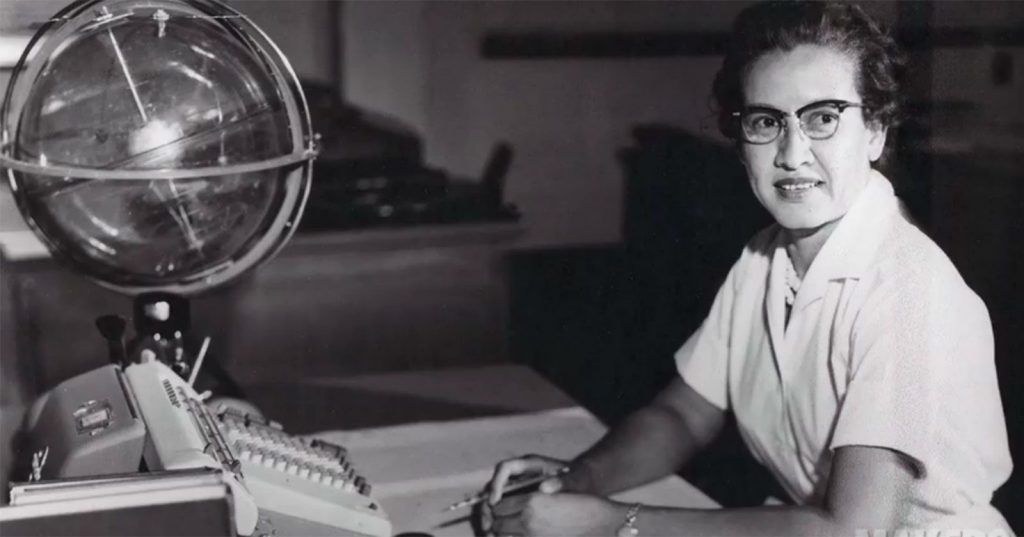
We recently named a conference room after the great Dr. Katherine Johnson, whom I believe embodies the ideal teammate, and SEPeer. And I’d like to gush over her for a few paragraphs.
Who is Dr. Johnson?
For those of you who haven’t seen or read Hidden Figures, or haven’t obsessed about brilliant, (not so hidden anymore) hidden gem mathematicians…
Katherine Johnson showed her potential early in life, graduating summa cum laude from West Virginia State College at age 18 with degrees in Mathematics and French. Johnson began her 35-year career under the title “computer.” In these early years, she mastered complex manual calculations, including computations used in the 1969 Apollo 11 moon landing, the USA’s first human spaceflight, and John Glenn’s orbit of the earth. She was one of the first African American women to work as a NASA scientist. In 2015, Johnson was awarded the Presidential Medal of Freedom, the United States’ highest civilian honor, for her hugely influential career.
Okay, so why is she sooOo0oo SEP?
1. She is really well known for teaching her peers.
And, by peers I mean people usually 4 years older than her because she was so far ahead in school. She would essentially open source her brain for anyone who needed it.
When she was 4, she started following her older brother, Charlie, to second grade to help him with his math work.
Putting such a selfless priority on knowledge sharing is the most SEP thing I can think of.
2. She lived by her dad’s mantra, “I’m as good as anybody, but no better.”
That statement just sums up a very rare, very powerful combination of confidence and humility.
This mantra made me appreciate the need for aggression in the workplace. Johnson’s readiness to confront set her up to be the first woman in her division at NASA (then NACA) with her name on a report.
3. Johnson’s title was actually “computer.”
I just think is just a super fun part of our computer science history. One we should remember and cherish. Johnson and her colleagues were doing computations for things so new they had to write their own textbooks on it.
4. NASA’s first super computer’s math was checked against her mental math.
Imagine being such a valued consultant, such an intelligent engineer, that you’re trusted above tools that are specifically built for the problem. That, to me, is the ultimate #relationshipgoals with our clients. Having proven ourselves so dependable and brilliant, that we’re the go-to source of truth for the hard problems.
5. Dr. William Claytor, the first Ph.D to teach mathematics at any college in West Virginia, the third African-American ever to receive a Ph.D. in mathematics, created new math courses at West Virginia State for her.
Johnson’s parents prioritized education above all else. So much so that her father worked and lived hours away so that he could afford to send all of the children to a good school. Johnson’s mother’s homeschooling was likely a big part of how Johnson was four years ahead of other students her age.
Anyway, I think this family trait helped her surround herself with a community of people like Dr. Claytor. People who would go above and beyond for one another. SEP is a community of such people, people who help make you “awesomer faster,” as we say at SEP.
6. “Do the research. Ask Questions.” – KJ
I have this quote on my desk because of its brilliant simplicity. To me, it speaks to a no-nonsense approach to work. It says that as long as you’re doing the work and maintain a genuine curiosity when it comes to your field and your colleagues, you can’t go wrong.
7. She quit her graduate program after a year to raise her family.
Okay, this one shocked me. I think after reading her book and watching her movie, I expected this bad-ass career woman, which she totally is. I’m embarrassed to say that for some reason I didn’t expect a bad-ass career woman to quit grad school to raise a family.
This hits me especially hard, being a 8 and a half month pregnant software developer, who has always stuck to a pretty steep career growth trajectory. Who, is just now coming to terms with a more gradual career growth path for this part of my career.
It’s a lesson that my coworkers have been trying to help me realize, and I’m not sure why it took knowing that Johnson did it for herself and for her family. It’s permissive in the most extraordinary way. It’s like exhaling when you didn’t even realize you were holding your breath.
Okay, okay! I’m done fan-girling!
I do totally recommend her autobiography, Reaching for the Moon (full disclosure, it’s a middle grade book). I really enjoyed her voice and what she values for young scientists and mathematicians.